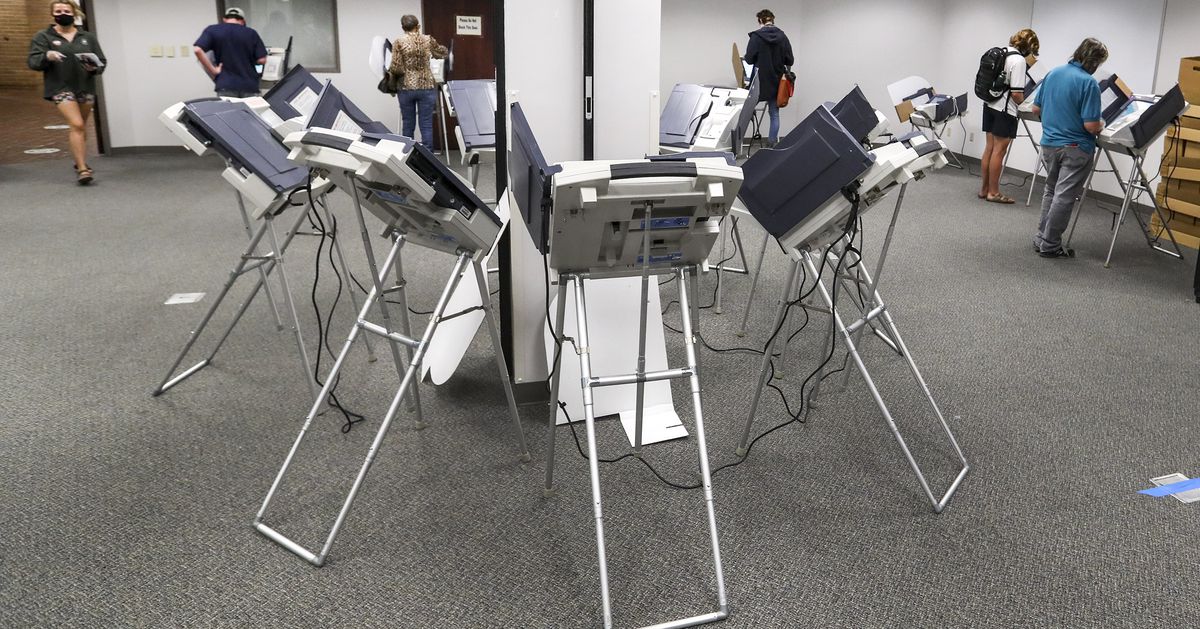
The recent New York City mayoral primary election received national attention not just because a moderate Democrat won, but because Ranked Choice Voting (RCV) was used. Many Utah cities will be utilizing RCV later this year.
In RCV, voters rank candidates on their ballots (i.e. first choice, second choice, etc.). If a candidate wins a majority of first-place votes, he or she wins the race. If not, the last-place candidate is eliminated and that person’s second-choice votes are allocated to those still in the race. The process continues until a candidate has a majority. Will RCV help Utah elections?
Pignanelli: ”Ranked-choice may be cost-efficient. But without a course in advanced calculus, let’s drop this rank nonsense.” — Dave Newhouse, Oakland Mercury News The current hostile environment requires the following admonition: elected and appointed officials willing to assume risk and attempt innovation, notwithstanding success or failures, deserve commendation and respect. The always astute Rep. Jeff Stenquist, sponsor of the legislation authorizing ranked choice voting, wisely stated, “I didn’t run the (RCV) bill because I’m convinced it’s a better way. I just want the ability for cities to give it a try,”
Ranked choice voting is intriguing, complicated, and very controversial. Despite perceptions of a recent novelty, the process was utilized — then abandoned — in various Western states a century ago. Supporters claim it saves taxpayers’ dollars by eliminating primary elections, increases opportunities for moderate candidates, decreases negative campaign tactics and guarantees the winner has a majority. Opponents claim its complexity leads to errors while disenfranchising minority voters. This complaint includes every vote is not equal, which lowers general confidence.
Plenty of opinions and several studies exist for supporters and opponents to use, but nothing from Utah. Thus, another admonition is our brave leaders research RCV extensively to determine advantages and problems for our state.
Webb: I’m not opposed to ranked choice voting, also called “instant-runoff voting.” In theory, at least, it’s a superior way to conduct elections. But I’m not ready to endorse the new system for major races. Utah is smart to experiment with ranked choice voting in smaller non-partisan municipal races. We’ll see how it works, allow voters to get used to it, and decide if it makes sense for other races.
Clearly, ranked choice voting could save a little money. In non-partisan races, it could eliminate the need for primary elections. In theory (again), it could lead to more mainstream representation with less negative campaigning and fewer attack ads. That’s because (in theory) candidates will try to avoid alienating supporters of other candidates, hoping to win their 2nd or 3rd-place votes.
All that is good, but be wary of the downsides. First, ranked choice voting can be confusing until voters get used to it. Expect initial elections to be somewhat chaotic. Also, results take longer to tabulate. Winners might not be known for several days.
Finally, expect a lot of complaints if the first-round winner ends up losing. For example, current Gov. Spencer Cox won only a little over 36 percent of the vote in the 2020 gubernatorial primary, with former Gov. Jon Huntsman close behind at 34.95 percent. Had RCV been employed in 2020, it’s entirely possible Huntsman could have overtaken Cox in the second or third rounds if enough supporters of Greg Hughes and Thomas Wright supported Huntsman as their second or third choice.
At the presidential level, imagine the high drama and extreme controversy if the first round winner ended up losing. Ranked choice voting opponents make a simple argument: First choice votes should determine elections, not second or third choices.
If the use of ranked choice voting in 2021 municipal elections is successful, should it be expanded to federal and state races in 2022?
Pignanelli: In 2020, there were several GOP primaries with four contestants (Gubernatorial, Second and Fourth Congressional Districts). Utah’s signature gathering and delegate/convention system allowed for such unusual results. Ranked choice voting could be a potential option for such elections. The process could be extremely helpful in school board contests with multiple contenders.
However, until much more research is conducted, ranked choice voting should not be applied to general elections at this time. There are many issues to be examined: unwieldy ballots, why other states dropped ranked choice voting, etc.
Webb: Yes, let’s assess how the municipalities perform before going big with ranked choice voting.
Are other changes needed to Utah’s election laws?
Pignanelli: Legislators should have a robust discussion regarding multiple candidate primaries that occurred in both parties. The specific public policy determination whether a nominee be determined by majority or plurality is important. Another strong recommendation is that state leaders need to enhance their bragging about the voting system in Utah. While enduring some early hiccups, our mail in ballot mechanism is a model of fairness and simplicity. Once again the “Utah Way” is a model for the rest of the country.
Webb: Lawmakers should make some easy fixes to the signature-gathering process to get on the primary election ballot. A few quirks need to be resolved.
"choice" - Google News
July 18, 2021 at 03:19AM
https://ift.tt/3xIqmeB
Ranked choice voting: From New York to Utah - Deseret News
"choice" - Google News
https://ift.tt/2WiOHpU
https://ift.tt/3c9nRHD
Bagikan Berita Ini















0 Response to "Ranked choice voting: From New York to Utah - Deseret News"
Post a Comment